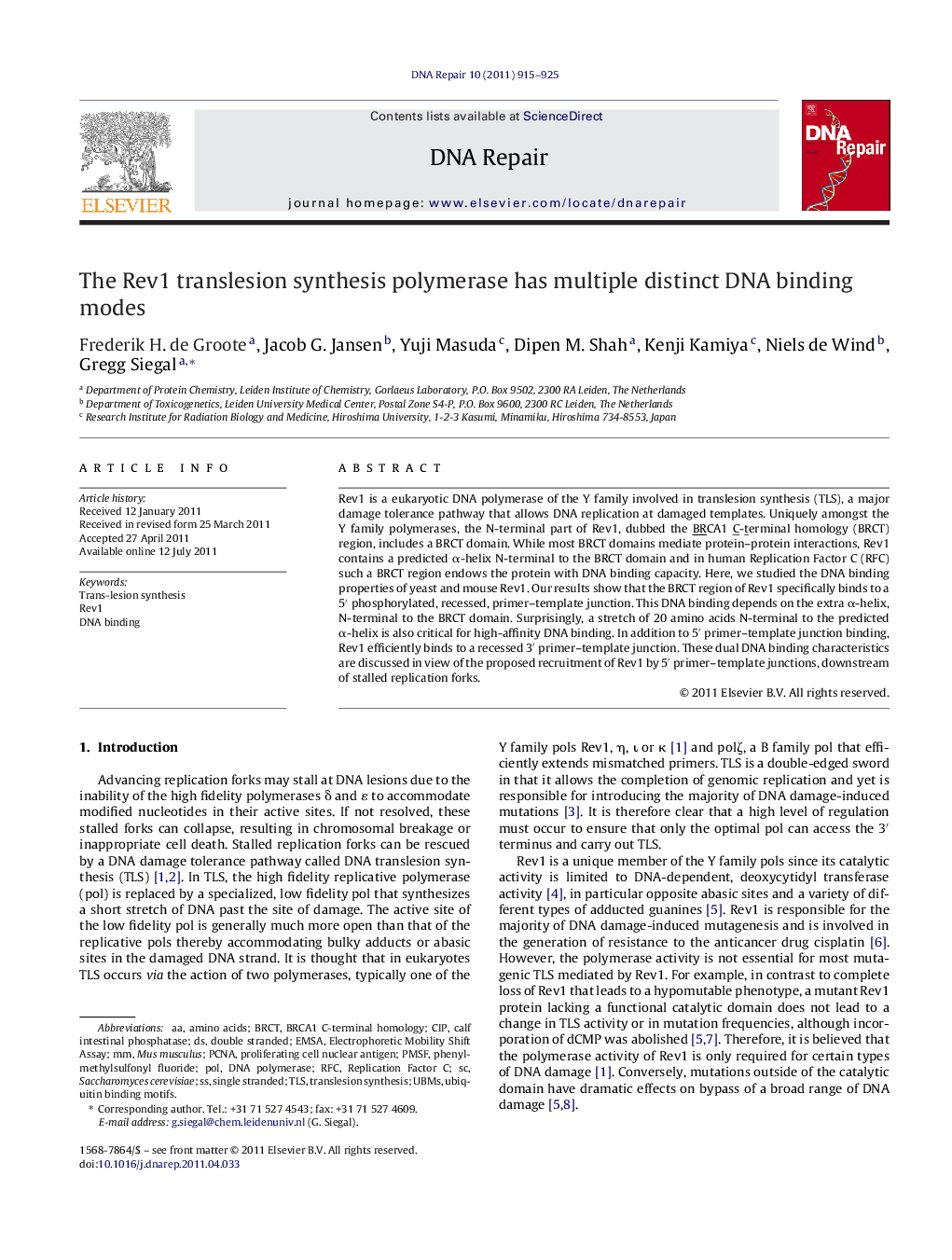| Article ID | Journal | Published Year | Pages | File Type |
|---|---|---|---|---|
| 1980347 | DNA Repair | 2011 | 11 Pages |
Rev1 is a eukaryotic DNA polymerase of the Y family involved in translesion synthesis (TLS), a major damage tolerance pathway that allows DNA replication at damaged templates. Uniquely amongst the Y family polymerases, the N-terminal part of Rev1, dubbed the BRCA1 C-terminal homology (BRCT) region, includes a BRCT domain. While most BRCT domains mediate protein–protein interactions, Rev1 contains a predicted α-helix N-terminal to the BRCT domain and in human Replication Factor C (RFC) such a BRCT region endows the protein with DNA binding capacity. Here, we studied the DNA binding properties of yeast and mouse Rev1. Our results show that the BRCT region of Rev1 specifically binds to a 5′ phosphorylated, recessed, primer–template junction. This DNA binding depends on the extra α-helix, N-terminal to the BRCT domain. Surprisingly, a stretch of 20 amino acids N-terminal to the predicted α-helix is also critical for high-affinity DNA binding. In addition to 5′ primer–template junction binding, Rev1 efficiently binds to a recessed 3′ primer–template junction. These dual DNA binding characteristics are discussed in view of the proposed recruitment of Rev1 by 5′ primer–template junctions, downstream of stalled replication forks.
► The Rev1 BRCT domain is important for post-replicative gap filling in TLS. ► Rev1 BRCT specifically binds, 5′ phosphorylated, recessed double-stranded DNA ends. ► Other portions of Rev1 specifically bind 3′ OH ends of double-stranded DNA. ► Binding may result in the transfer Rev1 from the 5′ to the 3′ end of gapped DNA during TLS.
